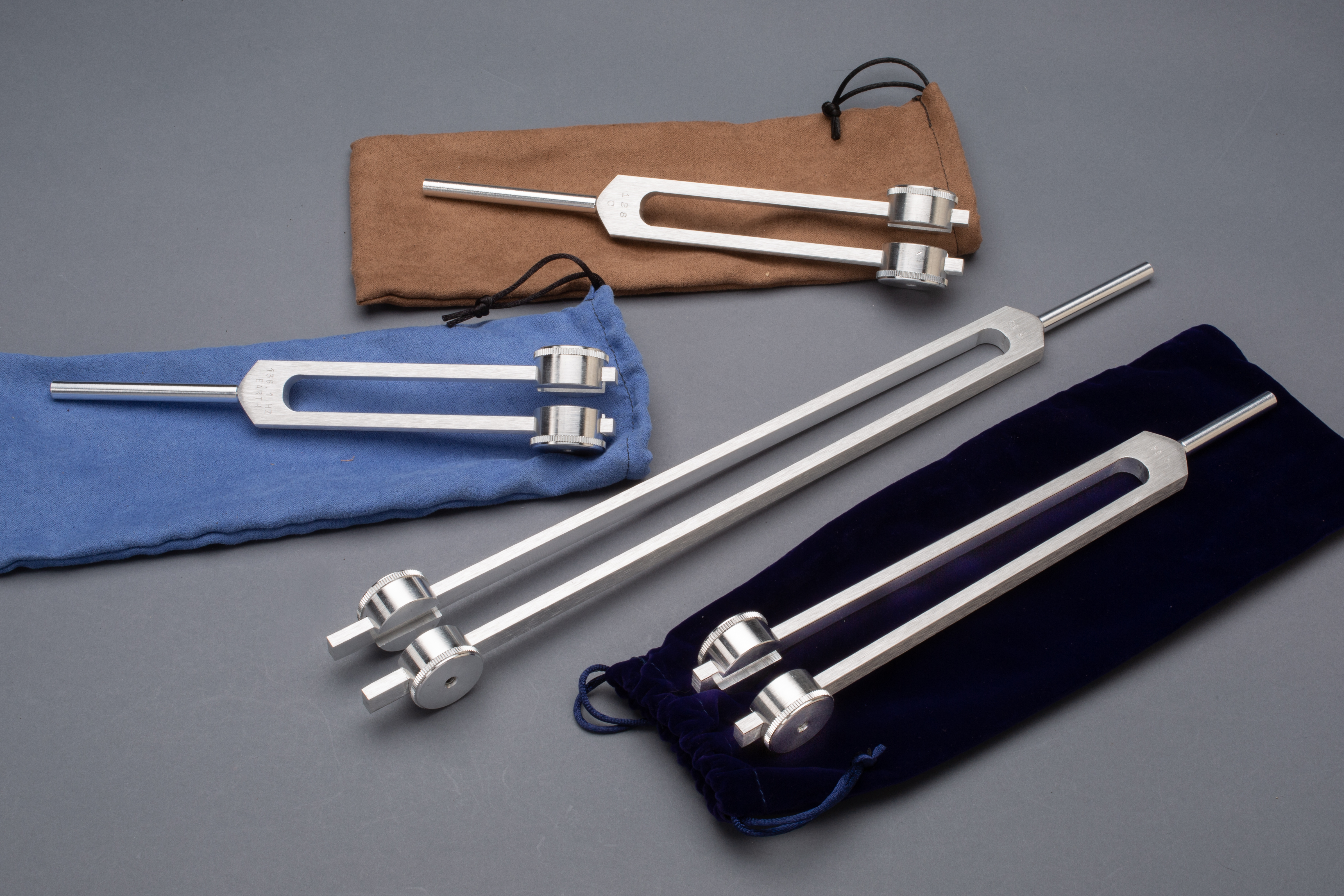Weighted Tuning Forks Pt 2- Working with the Spine

As you may know, weighted tuning forks are best used by the ears and on the body because of the stronger vibration they create compared to the unweighted tuning forks. In my last post I talked about how to use weighted tuning forks and acupuncture meridians. In this post I'll talk about the spine and vertebra, which organs they connect to and the body functions each organ cares for. You'll find recommendations for which tuning fork to use for different areas of the spine in the free download at the bottom of this post.
If you have had back surgery or an injury
First, if you have had back surgery, please check with your doctor first. If your doctor says no but you decide to try it any way, have the person using the forks start at the bottom of your feet and the knees. Then on the back starting at the furthest point from where the surgery or injury is. Slowly work your way down or up the back. If at any time you feel pain, stop. This is not supposed to hurt. If you have had recent surgery, don't use the tuning forks on your back.
Getting Started with the Spine
The first thing you'll need is a chart of the spine. Hang it on a wall if you can, I find it is easier to look up at a big chart to find your next reference point.
The spine is separated into 4 regions, Cervical, Thoracic, Lumbar and Sacral. Each vertebra is numbered based on the region it is in so Th1 is the first vertebra in the thoracic region and L3 is the third vertebra in the lumbar region.
How to Find a Vertebra / Spinous Process
 The spinous process is the protrusion on the back of a vertebrae. It is where the muscles connect to the vertebra. When you feel the bumps along the spine, that is the spinous process.
The spinous process is the protrusion on the back of a vertebrae. It is where the muscles connect to the vertebra. When you feel the bumps along the spine, that is the spinous process.
To begin, bend your neck down and feel for the most prominent bump(s) between your shoulder blades around where you neck ends. You may feel two bumps. The one closest to your head is cervical 7 (C7), the next one down is thoracic 1 (Th1). From there you just count up or down (C6, C5 etc or Th2, Th3 etc).
The truth is that when you are using tuning forks, being on the exact spot is not essential because the vibration of the fork spreads out. If you are off by one or two vertebra, you'll be ok and no matter which vertebrae you touch, good things will happen. When I work on the back I touch every vertebra anyway.
Vertebra and Body Function Connection
Each vertebra is connected to a body function. For example, T1 (thoracic 1) is connected to the arms from elbows down, esophagus and trachea. T8 is connected to the spleen. If you are working with specific organs, then you should definitely place some focus on the spine and vertebra which is connected to that function.
Vertebra and Symptoms
If there is an imbalance with an organ or body function, symptoms will show up. If you or your client is having issues such as asthma, coughing, difficultly breathing, shortness of breath or pain in lower arms and legs, then you'll want to place your focus on Th1 which is the vertebra connected with the esophagus, trachea and arms from the elbows down. If the immune system is weakened, then focus on the spleen and Th8. Again, a full listing is available for download at the end of this post.
Vertebra and Chakra Connection
The connection between vertebra also extends to chakras. Following the examples above, the root and heart chakras are connected to Th1 and the immune system is connected to the spleen, Th8. So if you work with chakras, you can definitely connect your energy healing with physically healing the spine.
Because each chakra had a musical note associated with it, you can use sound therapy and music to address imbalances as well. In this case, if you have the Solar Harmonic tuning forks you can connect your sound and energy healing with a physical healing.
